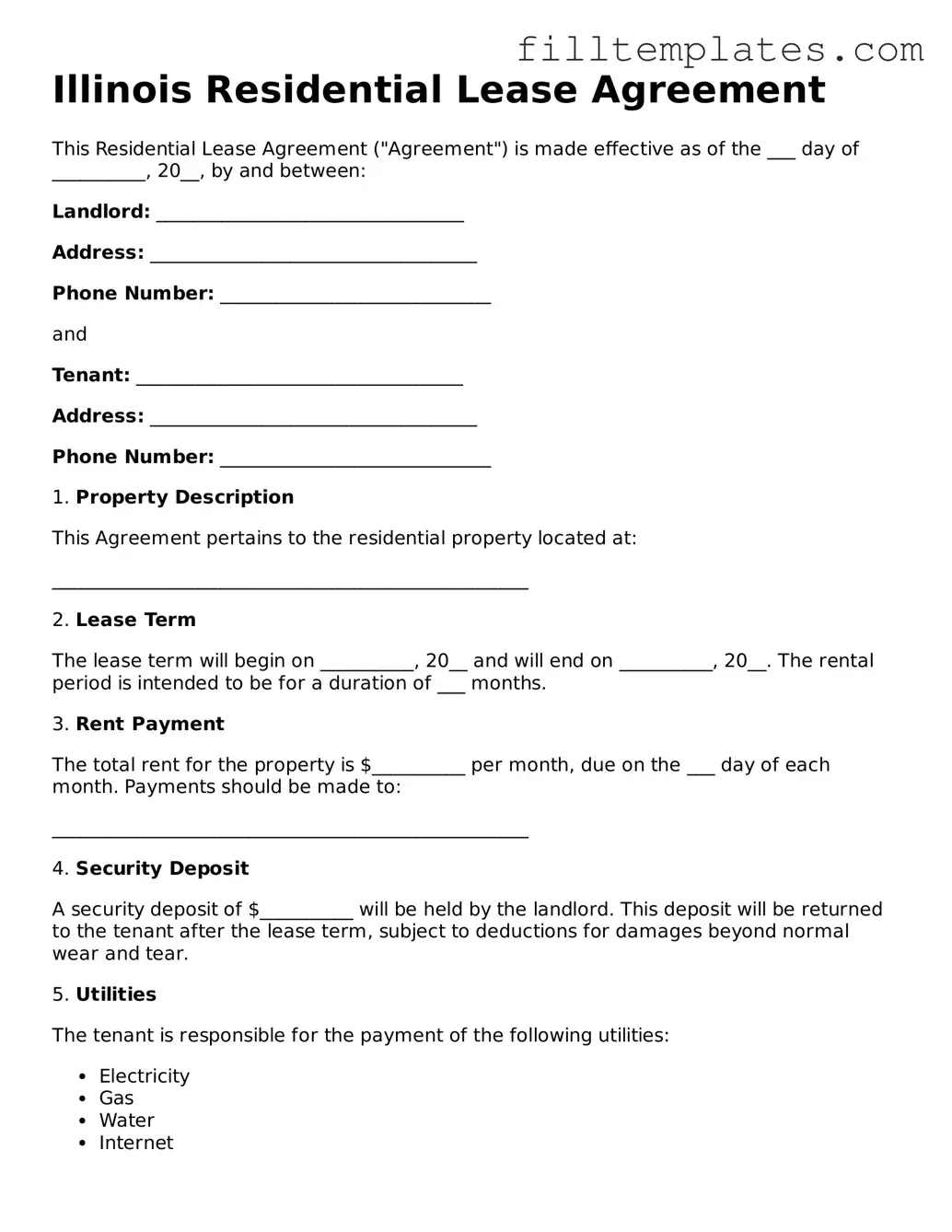Illinois Residential Lease Agreement
This Residential Lease Agreement ("Agreement") is made effective as of the ___ day of __________, 20__, by and between:
Landlord: _________________________________
Address: ___________________________________
Phone Number: _____________________________
and
Tenant: ___________________________________
Address: ___________________________________
Phone Number: _____________________________
1. Property Description
This Agreement pertains to the residential property located at:
___________________________________________________
2. Lease Term
The lease term will begin on __________, 20__ and will end on __________, 20__. The rental period is intended to be for a duration of ___ months.
3. Rent Payment
The total rent for the property is $__________ per month, due on the ___ day of each month. Payments should be made to:
___________________________________________________
4. Security Deposit
A security deposit of $__________ will be held by the landlord. This deposit will be returned to the tenant after the lease term, subject to deductions for damages beyond normal wear and tear.
5. Utilities
The tenant is responsible for the payment of the following utilities:
- Electricity
- Gas
- Water
- Internet
6. Use of Property
The property shall be used exclusively as a residential dwelling. No illegal activities or commercial enterprises are permitted.
7. Pets
Pets are allowed / not allowed on the premises. (Please specify any breed or size restrictions if applicable).
8. Alterations
The tenant must obtain written permission from the landlord before making any alterations or improvements to the property.
9. Termination of Lease
Either party may terminate this lease with a written notice of ____ days prior to the intended termination date, as outlined by the Illinois Landlord-Tenant Law.
10. Governing Law
This Agreement shall be governed by the laws of the State of Illinois.
IN WITNESS WHEREOF, the parties have signed this Residential Lease Agreement as of the date first written above.
Landlord Signature: ____________________________
Date: ____________________________________
Tenant Signature: _____________________________
Date: ____________________________________
